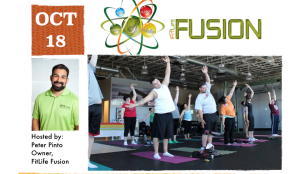If you want to lose weight fast, and I mean really fast then you NEED to read this!
Let this serve as a friendly warning to those seeking rapid weight loss. Please before you decide which path you’ll travel to get health, lose weight, speed up your metabolism or reach any other health and fitness goal take this information I’m about to present to you into consideration before moving forward.
Now here’s an interesting statistic. The based on consumer reviews the US is on of the most health conscious countries in the world. In 2009 over 75% of americans were more concerned about their health when purchasing foods compared to poles in 2007 and it’s only been growing since. We’ve also been battling Mexico for the #1 spot for the fattest country in the world. So how does one of the most health conscious countries in the world maintain a status as one of the sickest, fattest countries in the world? That answer, in my opinion, is pretty simple… WE’RE DOING IT WRONG! Guys, really… we’re doing it wrong. We’ve being targeting fat as the enemy for years and it’s not. Fat is a symptom of metabolic disfunction, like low energy, hair and skin problems, and constipation. If we just focus on the fat, if we only focus on losing weight as the end-all way of measuring how healthy a person is we degrade the quality of our lives far more than you could ever expect. Fat is the result of when your day to day bodily functions are being fueled improperly and therefore your metabolism has to literally rescue you from malnourishment and low blood-sugar levels.
What is metabolism?
Your body is a giant ball of energy. How efficiently your body creates energy on a daily basis is what determines whether you’re benefiting from a fast metabolism or suffering from a slow one. When most people think of metabolism they think of calories in, calories out or displacement of water, etc. And when these so-called “fitness professionals” discuss metabolism they do so by describing short and easy ways to boost your metabolism. For example…
“Drink 20oz of ice cold water first thing in the morning and you’ll boost your metabolism by blah-blah percentage for the next 24 hours!”
“Fasted exercise before eating breakfast can speed up your metabolism by over 30% each day”
“Drink green tea and lemon juice by the bucket!”
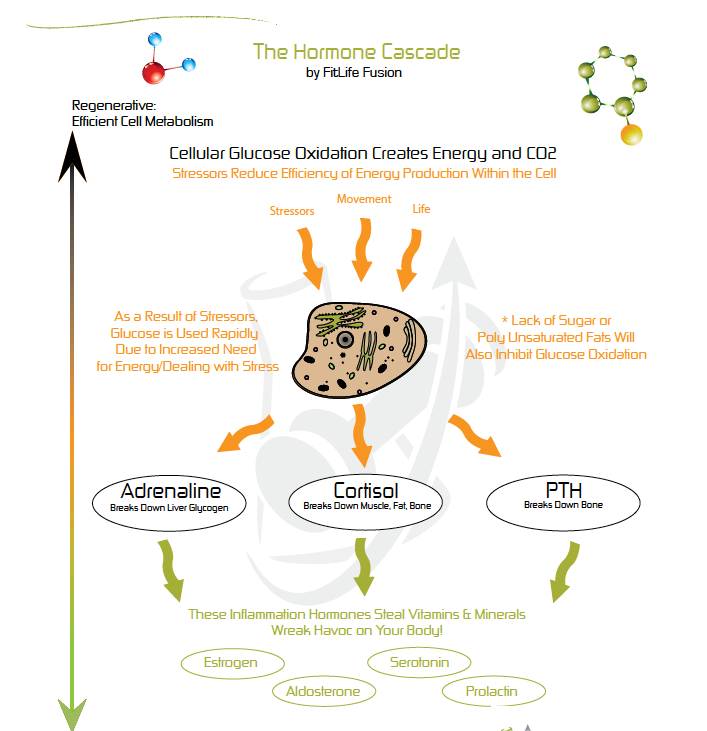
- The following hormones, just to mention a few, are designed to inflame and steal nutrients like vitamins and minerals to keep the energy process going:
- Estrogen
- Aldosterone
- Serotonin
- Prolactin
- Low body temperature (lower than 97.9 F in the morning and below 98.6 mid-day)
- Low pulse rate (below 75)
- Feel cold often. Cold hands, fee, or nose.
- Low or dragging energy. Energy highs and lows. Mid-day energy crash. Tired, but wired at night.
- Chronic thirst
- Urinating often (if you’re peeing more that 4 or 5 times per day, it’s a problem, especially if you’re waking up to pee in the middle of the night)
- Constipation, bloating, gas, diarrhea (1-3 bowel movements per day is healthy)
- Sleep is restless, interrupted, feel exhausted when you wake up
- Low libido, lack sex drive
- Overwhelming PMS symptoms
- Infertility
- Get sick often (suppressed immune system)
- Never get sick (overactive immune system)
- Skin problems like eczema, psoriasis, rashes,Hair thinning, falling out, brittle nails, slow growing
- Anxiety, depression, irritable, sad
- Gain weight easily
- Edema, swelling, inflammation issues
- Difficulty losing weight even with diet and exercise
 I don’t know about you, but knowing this makes me mad. I mean really MAD! To think that you may have paid someone to teach you how to slowly murder your metabolism… it’s infuriating!
I don’t know about you, but knowing this makes me mad. I mean really MAD! To think that you may have paid someone to teach you how to slowly murder your metabolism… it’s infuriating! - Feel warm all day (not hot)
- Pulse rate between 75-90 bpm
- Good energy consistently throughout your day
- Restful, interrupted Seep
- Healthy skin, strong nails, shiny hair
- Healthy sex drive, no PMS, fertile
- Regular bowel movements
- Urinating 4 or 5 times per day, not at night
- Maintain weight with exercising and dieting like crazy
- Feel calm, happy, relaxed, focused
- 2 Methods of Energy Production:
- Oxidative Metabolism = efficient/regenerative
- Glycolysis & Gluconeogenesis = very inefficient/degenerative
- In the efficient means of making energy your body maintains level blood sugar throughout the day avoiding the overproduction of degenerative (but lifesaving) hormones.
- Rapid fat loss methods used by trainers far and wide are really just ways of forcing your body into hypoglycemia resulting in loss of tissue to include fat, muscle and even bone density. THIS IS NOT HEALTHY WEIGHT LOSS!
- Figure out whether or not you need to repair your metabolism before setting out to lose weight.



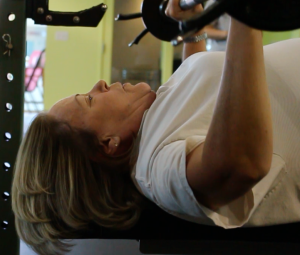
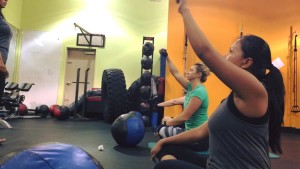
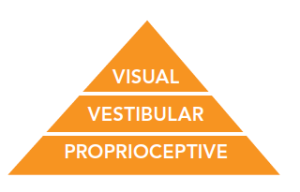
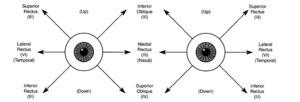
 Smooth pursuit refers to your eye ability to smoothly track a target in motion without moving your head. Again you’ll start with a target in your hand centered in front of you. Then move the target slowly in a straight line in each of the 8 directions of the compass. Your objective is to smoothly pursue the target with both eyes keeping it in focus. If you tend to lose focus or in a certain direction or if your eyes begin to tear up, take note of that direction as you’ll probably need more practice with it.
Smooth pursuit refers to your eye ability to smoothly track a target in motion without moving your head. Again you’ll start with a target in your hand centered in front of you. Then move the target slowly in a straight line in each of the 8 directions of the compass. Your objective is to smoothly pursue the target with both eyes keeping it in focus. If you tend to lose focus or in a certain direction or if your eyes begin to tear up, take note of that direction as you’ll probably need more practice with it.